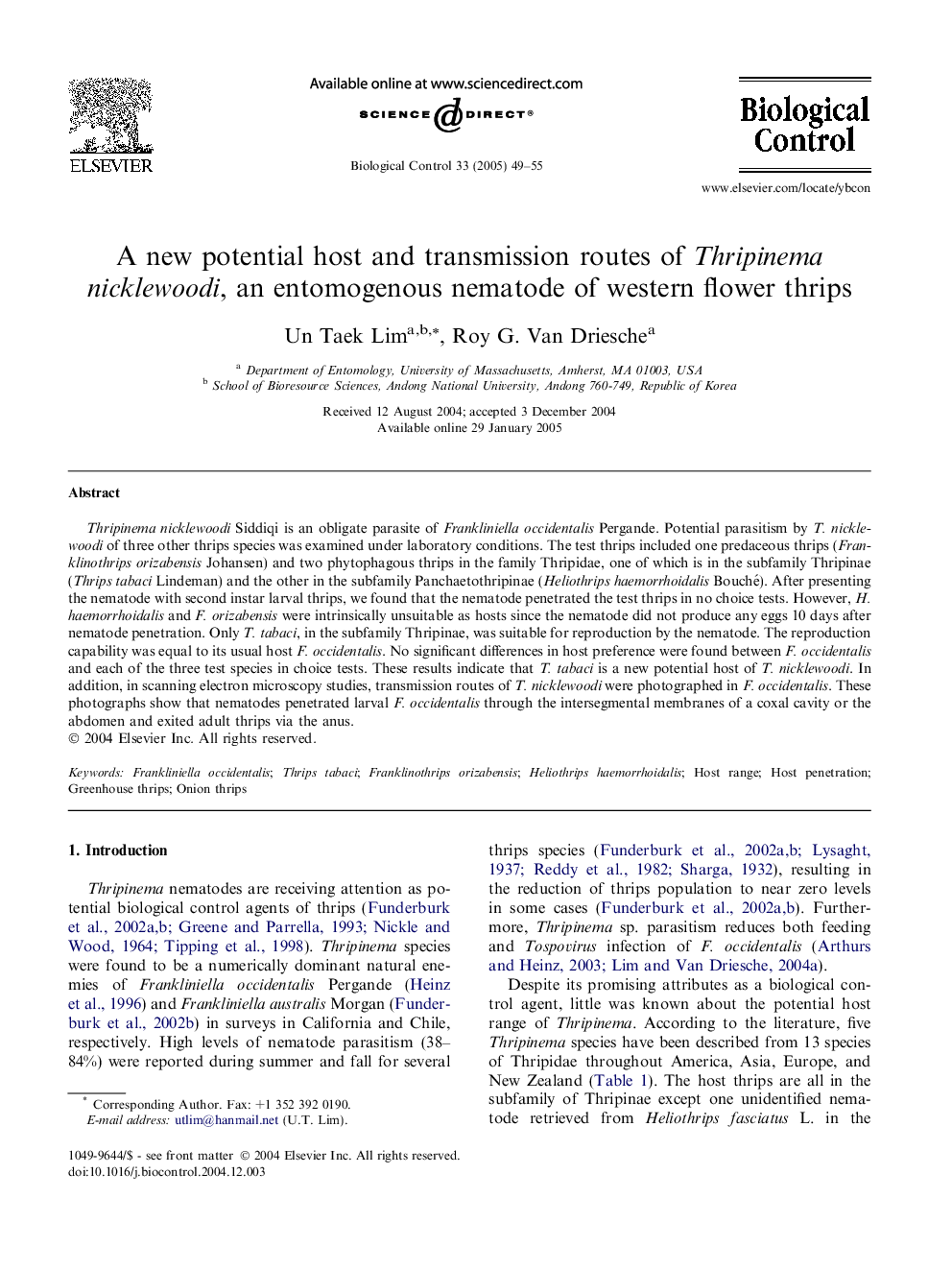| کد مقاله | کد نشریه | سال انتشار | مقاله انگلیسی | نسخه تمام متن |
|---|---|---|---|---|
| 9472069 | 1321158 | 2005 | 7 صفحه PDF | دانلود رایگان |
عنوان انگلیسی مقاله ISI
A new potential host and transmission routes of Thripinema nicklewoodi, an entomogenous nematode of western flower thrips
دانلود مقاله + سفارش ترجمه
دانلود مقاله ISI انگلیسی
رایگان برای ایرانیان
کلمات کلیدی
موضوعات مرتبط
علوم زیستی و بیوفناوری
علوم کشاورزی و بیولوژیک
علوم زراعت و اصلاح نباتات
پیش نمایش صفحه اول مقاله

چکیده انگلیسی
Thripinema nicklewoodi Siddiqi is an obligate parasite of Frankliniella occidentalis Pergande. Potential parasitism by T. nicklewoodi of three other thrips species was examined under laboratory conditions. The test thrips included one predaceous thrips (Franklinothrips orizabensis Johansen) and two phytophagous thrips in the family Thripidae, one of which is in the subfamily Thripinae (Thrips tabaci Lindeman) and the other in the subfamily Panchaetothripinae (Heliothrips haemorrhoidalis Bouché). After presenting the nematode with second instar larval thrips, we found that the nematode penetrated the test thrips in no choice tests. However, H. haemorrhoidalis and F. orizabensis were intrinsically unsuitable as hosts since the nematode did not produce any eggs 10 days after nematode penetration. Only T. tabaci, in the subfamily Thripinae, was suitable for reproduction by the nematode. The reproduction capability was equal to its usual host F. occidentalis. No significant differences in host preference were found between F. occidentalis and each of the three test species in choice tests. These results indicate that T. tabaci is a new potential host of T. nicklewoodi. In addition, in scanning electron microscopy studies, transmission routes of T. nicklewoodi were photographed in F. occidentalis. These photographs show that nematodes penetrated larval F. occidentalis through the intersegmental membranes of a coxal cavity or the abdomen and exited adult thrips via the anus.
ناشر
Database: Elsevier - ScienceDirect (ساینس دایرکت)
Journal: Biological Control - Volume 33, Issue 1, April 2005, Pages 49-55
Journal: Biological Control - Volume 33, Issue 1, April 2005, Pages 49-55
نویسندگان
Un Taek Lim, Roy G. Van Driesche,